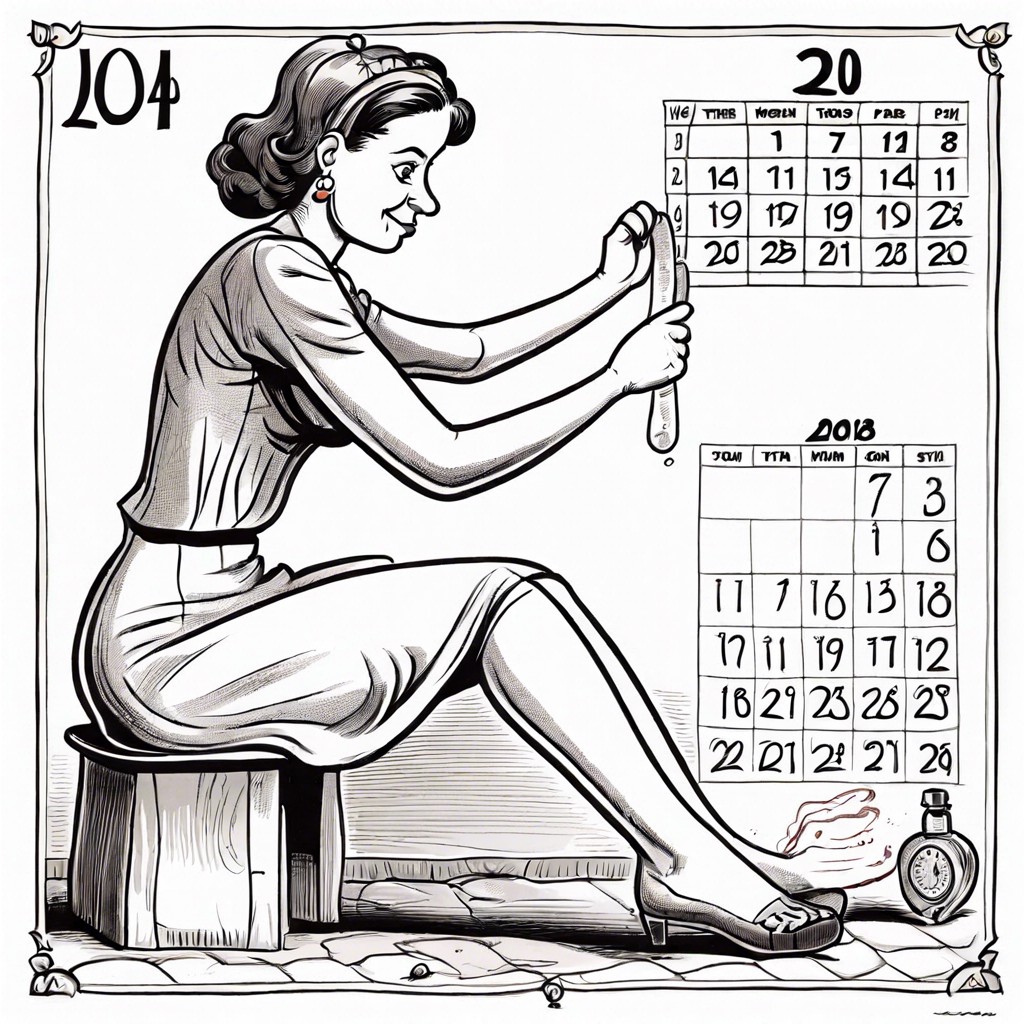You will learn practical methods to accurately estimate gestational age for a more informed and healthy pregnancy.
So you’re trying to pinpoint just how far along that little bun in the oven is? Look no further! From deciphering the last menstrual period like a cryptic message to using high-tech ultrasounds that feel straight out of a sci-fi movie, we’ve got you covered. This guide delves into every trick in the book—fundal height, fetal wiggles, and more. Read on to master the art of estimating gestational age like a pro!
Key takeaways:
- LMP marks start of pregnancy; estimate 280 days.
- Ultrasounds provide precise age estimates via measurements.
- Fundal height approximates gestational age in centimeters.
- Fetal movements indicate age; track patterns in kicks.
- Biometric assessments use measurements for accurate age estimation.
Last Menstrual Period (LMP)

The first day of your last menstrual period (LMP) is like the starting line of the pregnancy marathon. Obstetricians love it because it’s simple and often quite accurate for estimating gestational age. Here’s the scoop:
The magic number is 280 days. That’s roughly 40 weeks from the first day of LMP to your due date.
Why 40 weeks, you ask? Because it takes into account the typical 28-day menstrual cycle and average ovulation date.
This method presumes a regular menstrual cycle. Irregular cycles can throw off calculations faster than a toddler’s temper tantrum.
If you’re a math whiz or have a handy-dandy pregnancy app, you can easily tally up those 280 days yourself. But, most would just let the doc do it!
So, grab that calendar, mark your last period’s debut, and let the countdown begin.
Ultrasound Measurements
Early in pregnancy, ultrasounds are like the VIP backstage pass to see how things are progressing. They measure the crown-rump length (CRL), which is just a fancy term for the distance from the baby’s head to its bottom. This measurement gives a precise estimate of gestational age, especially in the first trimester when babies are generally the same size.
As pregnancy advances, ultrasounds measure other parts like the biparietal diameter (BPD), which is the width of the baby’s head, and the femur length. These measurements help refine the gestational age estimate but can be a bit more variable than CRL.
Ultrasounds do more than just provide adorable baby snapshots. They verify dates, check growth, and ensure everything’s on track. Imagine it like tuning in for the latest episode of your favorite show.
Fundal Height
Ever wondered how measuring a bump can actually tell us the baby’s age? It’s pretty neat! Here’s a quick breakdown:
- Fundal height is the distance from the pubic bone to the top of the uterus.
- Around 20 weeks, the uterus is usually at the level of the belly button. Think of it as a biological landmark.
- For every week of pregnancy, the fundal height in centimeters roughly equals the number of weeks gestational age. So, 24 cm suggests 24 weeks.
- Simple, right? Tape measures aren’t just for tailors!
Remember, it’s not foolproof. Factors like multiple pregnancies or an unusually large baby can throw the measurements off a bit. But generally, think of it as a handy, non-invasive way to check progress. And who knew your belly could double as a ruler?
Fetal Movement Monitoring
Feeling those first baby kicks is like getting a VIP ticket to the greatest show on Earth – the Baby Wigglefest!
By tracking these movements, you can estimate gestational age. Typically, moms start feeling the flutter by 18-25 weeks. First-time moms might feel it later, while seasoned pros (yes, moms, you!) pick up on it earlier.
Keep a kick count diary. Jot down the time it takes to feel 10 kicks, rolls, or flutters. Consistent patterns solidify the gestational timeline.
Notice changes. Regular, rhythmic movements can hint at specific weeks. Around 28-32 weeks, movements peak and then plateau. No, your baby isn’t getting lazy; they’re just running out of space for those gymnastic routines.
Nuchal Translucency Screening
Used around 11 to 14 weeks of pregnancy, this test checks the clear (translucent) space in the tissue at the back of the baby’s neck. Babies with certain conditions tend to accumulate more fluid in this area during the first trimester.
- Points to consider:
- Measures fluid buildup.
- Combined with blood tests for accuracy.
- Non-invasive and painless.
- Helps identify risk of chromosomal abnormalities.
It’s like your baby’s first selfie, but instead of duck lips, we’re checking for vital health clues.
Biometric Assessments
Biometric assessments provide a magical peek into the womb. By measuring parts of the fetus, healthcare providers can estimate gestational age with surprising accuracy.
Take a look at these key measurements:
Head Circumference: Think of this as the baby’s noggin report card. It’s a fundamental metric, helping map growth patterns.
Femur Length: The longest bone in the body – even for a fetus. Measuring the little leg can offer insights into overall development.
Abdominal Circumference: Yes, baby bump size matters! This measurement correlates well with birth weight predictions.
Humerus Length: Another bone in the body parade, adding a layer of precision.
Each of these measurements is a small puzzle piece, fitting neatly into the bigger picture of gestational age estimation. The more pieces we have, the clearer the image. Fascinating, isn’t it?
Obstetric History and Physical Exam
Doctors gather vital information by reviewing the mother’s health history. Details like previous pregnancies, medical conditions, and menstrual cycle regularities give essential clues about gestational age.
Physical exams contribute too. During these visits, measuring the uterus size and monitoring weight changes provide insight into fetal development stages. Your doc might also check the baby’s heartbeat, a little perk of modern medicine that would make our grandmothers green with envy.
Using this combination, healthcare providers can make educated guesses on how far along the pregnancy is. This isn’t guess-your-age-at-the-fair territory; we’re talking informed estimates based on solid data.